Character reference sample pardon letter template
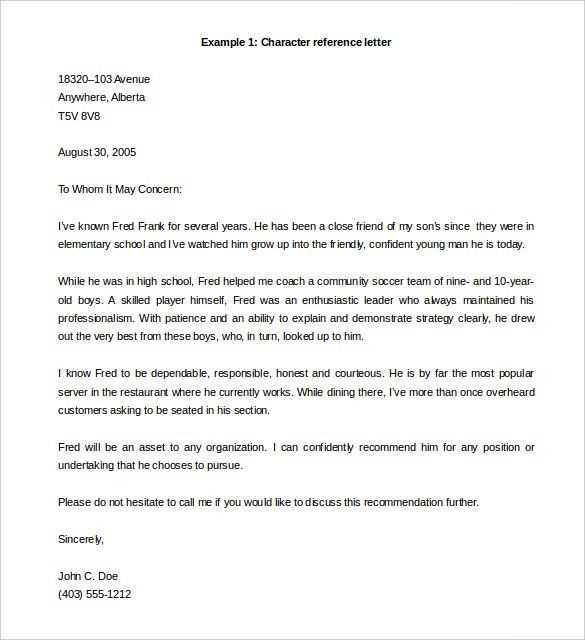
Hey! How’s it going today?
Character Reference Sample Pardon Letter Template
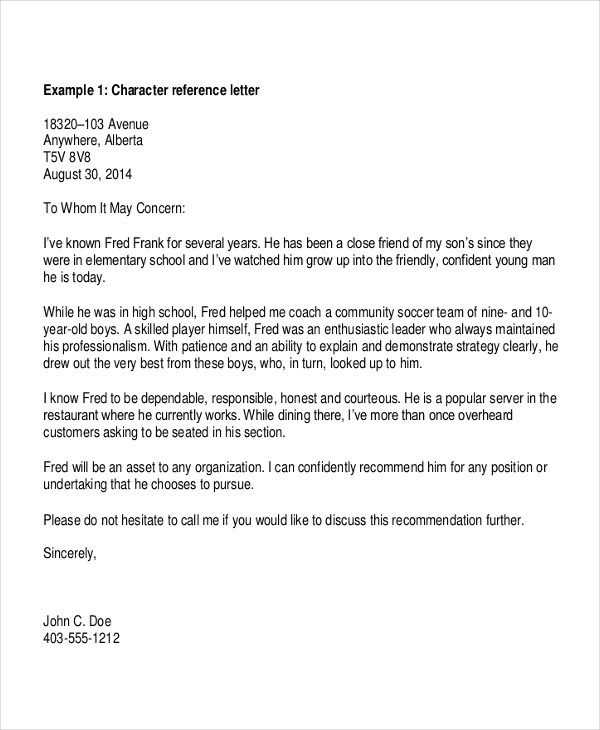
A character reference letter for a pardon request should highlight the individual’s personal qualities and their positive contributions to society. Focus on specific traits that demonstrate their growth and commitment to change. Provide examples of their character, showing that the past actions they are seeking to be pardoned for were out of line with their true nature.
Start by stating how long you’ve known the individual and in what capacity. Include a brief description of your relationship to establish credibility. Mention specific instances that reflect their responsible behavior, integrity, or kindness. If the person has shown remorse, share your insight into their efforts to make amends and grow from their past mistakes.
Be honest, yet supportive. Acknowledge the gravity of the past actions but emphasize the person’s rehabilitation or positive actions since then. If they’ve been involved in community service, worked to improve themselves, or have shown commitment to making better choices, mention these achievements clearly.
Conclude by expressing your belief in the person’s ability to reintegrate into society and contribute positively if granted a pardon. A strong letter focuses on facts and personal experience, demonstrating how the individual’s life and behavior have shifted since their offense. Keep the tone professional but sincere throughout the letter.
Key Information to Include About the Individual Requesting the Pardon
Include the full name of the individual requesting the pardon, along with their date of birth and current address. This ensures clear identification of the person involved in the request.
Provide details about the conviction, such as the date of the offense, the charges, and the sentence. Clarify whether the individual has completed their sentence or is currently serving it. This background is crucial for understanding the context of the pardon request.
Personal History and Rehabilitation Efforts
Describe the individual’s life since the conviction. Highlight any positive changes, such as education, employment, or community service. Show how the person has demonstrated responsibility and a commitment to reform. This section should focus on actions that prove the individual is not a risk to society.
Character and Support
Include statements from individuals who can vouch for the person’s character. Mention family, friends, or employers who can attest to the individual’s positive behavior and efforts to change. These endorsements add credibility to the request and offer insight into the person’s current standing.
Always ensure that the information presented is accurate and up-to-date to provide a clear and honest representation of the individual seeking the pardon.
Demonstrating the Person’s Rehabilitation and Positive Changes
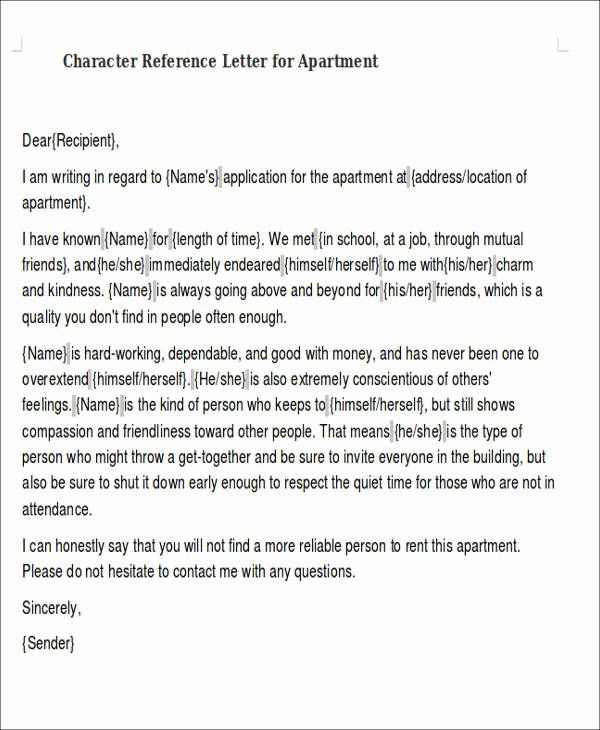
To highlight a person’s rehabilitation and positive changes, focus on specific examples of their actions, behaviors, and achievements. Provide concrete evidence of how they have taken responsibility for past mistakes and worked toward self-improvement.
- Educational and Vocational Progress: Detail any academic qualifications or job skills the person has acquired since their conviction. Mention any courses, certifications, or training programs they have completed to improve their prospects.
- Community Service and Volunteering: Mention any volunteer work the person has been involved in, especially if it’s related to helping others who have faced similar struggles. Show how they’ve contributed to their community or supported social causes.
- Behavioral Changes: Highlight specific steps the person has taken to address issues such as substance abuse, anger management, or other personal challenges. This could include therapy, counseling, or participation in support groups.
- Employment History: If applicable, provide details on stable employment or job advancement. Demonstrating reliability and work ethic can strongly support the case for rehabilitation.
- Positive Relationships: Mention how the person has built or strengthened relationships with family, friends, and mentors. Positive personal connections can show growth and stability.
By providing clear, concrete examples of the person’s efforts to turn their life around, you effectively demonstrate the positive changes they’ve made. This approach not only highlights their rehabilitation but also emphasizes their commitment to becoming a responsible, contributing member of society.
Using Personal Experiences to Strengthen the Letter’s Impact
Sharing specific, real-life examples in a character reference letter provides a personal touch that strengthens the case for a pardon. Relating your own interactions with the individual shows not just your knowledge of their character but also your investment in their growth. Think about moments where the person demonstrated responsibility, remorse, or positive change. These stories are more persuasive than abstract statements of their qualities.
Provide Specific Examples
Rather than stating general qualities like “kind” or “honest,” describe specific situations that illustrate these traits. Did the person go out of their way to help others? Were they involved in community service or mentoring? Concrete instances add weight to your words, making your letter stand out from the generic ones.
Connect Personal Growth to the Pardon Request
Highlight how the individual has changed since their offense. If possible, link this growth to your own observations or shared experiences. Showing how the person’s actions align with their desire for a second chance helps the reader see their progress and potential. This approach can make the letter more compelling and humanize the request for a pardon.
Common Mistakes to Avoid in Writing a Character Reference Pardon Letter
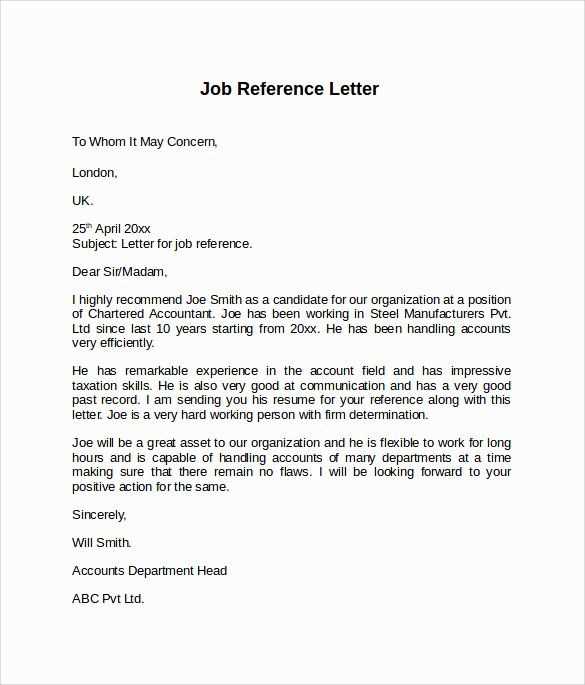
Avoid vague or generic statements. A strong letter provides specific examples of the individual’s positive traits and actions. Instead of saying “he’s a good person,” describe the person’s behavior, work ethic, or contributions to the community. Clear, concrete examples add credibility to the letter and make it more persuasive.
Overuse of Flattering Language
Excessive praise or overly flattering language can weaken the impact of the letter. While it’s important to highlight the individual’s strengths, avoid sounding insincere. Keep the tone respectful and honest. The goal is to showcase the person’s growth and commitment to positive change, not to paint a perfect picture.
Failing to Address the Pardon Request Directly
Don’t neglect to clearly explain why you believe the individual deserves a pardon. The letter should not only highlight the person’s character but also explain why a pardon would be a just decision. Avoid vague statements or leaving the matter unaddressed. Be direct and clear about why you’re supporting their request.
Another mistake is writing in a formal tone that feels disconnected. Keep your tone professional, but also show sincerity. The letter should reflect your genuine belief in the individual’s capacity for change, rather than coming across as a formulaic response.
Final Review: Ensuring Accuracy and Professional Tone in Your Letter
Before submitting your character reference letter, review it carefully to ensure it is both accurate and maintains a professional tone. First, double-check the recipient’s name and address for correctness. A small mistake in addressing can undermine your letter’s credibility. Also, ensure the details about the person you’re recommending, such as their achievements or character traits, are correct and aligned with your experiences.
Check Grammar and Spelling
Grammatical errors can detract from the seriousness of your letter. Use grammar-check tools, but also read the letter yourself to catch anything that might have slipped through. Focus on sentence structure and punctuation. Any mistakes can weaken the impact of your message and distract from the purpose of the letter.
Maintain a Formal and Supportive Tone
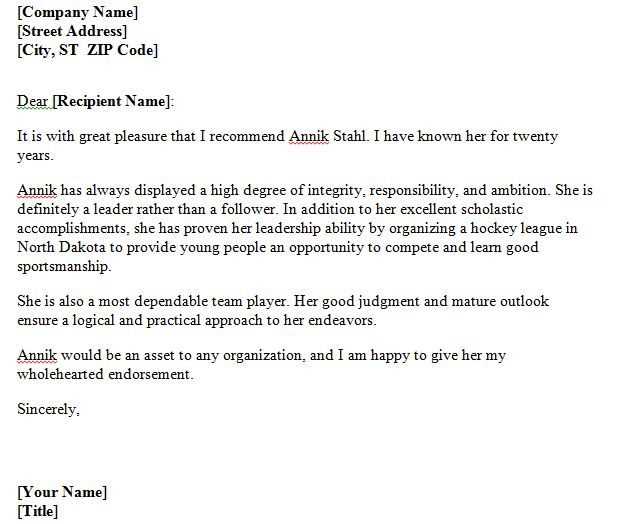
Your letter should convey respect and professionalism. Avoid overly casual language or exaggerated compliments. Stick to the facts and present them clearly, demonstrating your genuine belief in the individual’s abilities. Keep your tone polite and avoid any language that could be seen as biased or inappropriate.